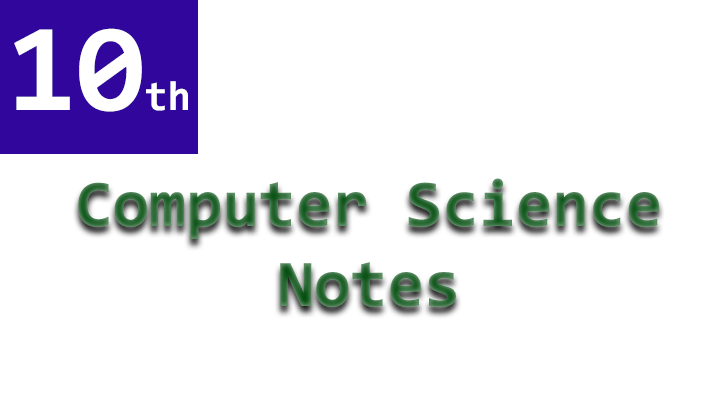Introducing the pinnacle of simplicity and excellence in learning – the 10th Class Computer Science Notes. These notes have been meticulously crafted to serve as your ultimate companion on the journey to mastering computer science concepts. Designed with utmost clarity and precision, these notes distill complex topics into bite-sized, easy-to-understand explanations. Whether you’re delving into programming basics, exploring data structures, or unraveling the intricacies of functions, these notes are your key to unlocking a world of knowledge effortlessly. Experience the joy of learning with these best-in-class notes, designed to make your study journey both enjoyable and fruitful.
Unit 1: Introduction to Programming
In the realm of computer science, the journey begins with mastering the fundamentals. Unit 1, “Introduction to Programming,” serves as the cornerstone for building a strong programming foundation. Within this unit, we will embark on an exploration of the programming environment, dissecting the components of an Integrated Development Environment (IDE) and a Text Editor. Moreover, we will delve into the intricacies of programming basics, unraveling the concepts of Reserved Words, the Structure of a C Program, and the Purpose and Syntax of comments in C Programs. As we progress, the spotlight will shift towards Constants and Variables, where we will unravel the nature of Constants, Variables, Data types, Naming conventions, and the essential processes of Variable Declaration and Initialization. With Unit 1 as our compass, we will navigate the terrain of programming with confidence and clarity. Read Full Notes 10th Unit 1 Introduction to Programming
Unit 2: User Interaction
User Interaction stands as a pivotal juncture where the art of programming converges with the real world’s dynamic demands. Within Unit 2, we embark on a journey to comprehend the intricacies of Input/Output (I/O) Functions. The nuances of Format Specifiers and essential functions like scanf() and getch() will be unraveled, as we learn how to effectively communicate with users. Our exploration extends to the realm of operators – from Assignment to Arithmetic, Relational to Logical. The profound significance of each operator’s role and their precedence will be a focal point. As we navigate through this unit, we’ll equip ourselves with the skills to craft efficient and interactive programs. Read Full Notes 10th Unit 2 User Interaction
Unit 3: Conditional Logic
Navigating the labyrinth of program flow and decision-making is the essence of Unit 3, “Conditional Logic.” Our journey begins with a comprehensive exploration of Control Statements. Further, we delve into Selection Statements, where the alchemy of choices unfolds. We unravel the If Statement and its more versatile counterpart – the If-else Statement. The concept of Nested If-else Structures is also uncovered, ensuring our ability to handle intricate decision paths. Aided by Solved Example Problems, we consolidate our understanding of this pivotal unit. Read Full Notes 10th Unit 3 Conditional Logic
Unit 4: Data and Repetition
At the heart of every program lies the manipulation of data and the orchestration of repetition. In Unit 4, aptly named “Data and Repetition,” we venture into the realm of Data Structures. Array, its Declaration, Initialization, and Accessing elements stand as our initial pillars. The concept of using variables as array indexes adds depth to our understanding. We then transition to Loop Structures, dissecting their general structure and syntax. The for loop takes center stage, accompanied by insights into Nested Loops and their application through Solved Example Problems. As we emerge from this unit, we will wield the power of data manipulation and iteration with precision. Read Full Notes 10th Unit 4 Data and Repetition
Unit 5: Functions
The crowning jewel of modular programming awaits within Unit 5, aptly named “Functions.” We embark on an expedition to understand the diverse Types of Functions, along with the nuances of their structure and purpose. The process of Defining a Function becomes a well-trodden path, allowing us to encapsulate logic for efficient and reusable code. Solved Example Problems illuminate our way, reinforcing our mastery over functions’ art. With this unit as our guide, we unlock the realm of modular programming, positioning ourselves as adept architects of efficient code. Read Full Notes 10th Unit 5 Functions

